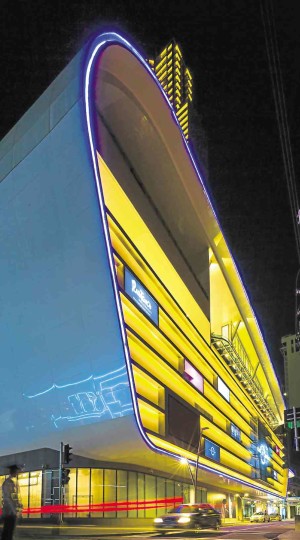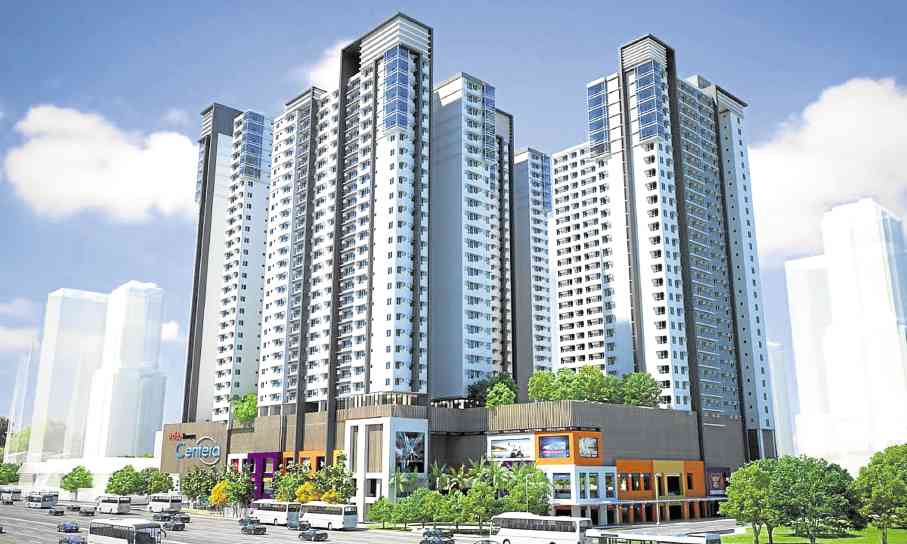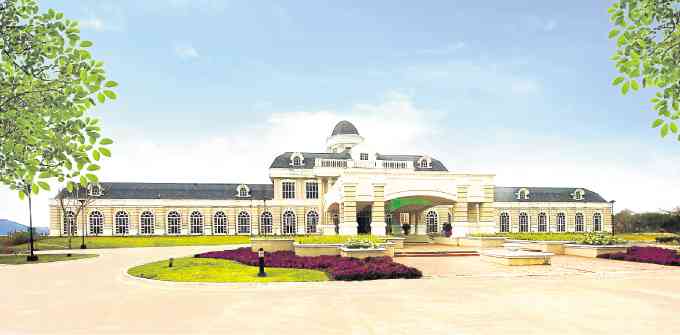PH real estate continues strong rally

Century Properties has also sealed a partnership with Japan’s Mitsubishi Corp. to launch housing units for the first time homebuyer.
Stellar would probably best describe the strong, sustained growth of the Philippine real estate industry this year.
A look at the performance of some of the biggest property developers alone would clearly demonstrate the impressive gains made by the industry—many of them well on track with their medium term expansion plans, launching new projects, introducing innovative concepts, and aggressively ramping up their respective already massive capital outlays over the next several years.
No doubt about it: property developers are highly bullish of their prospects, evident in the continued construction boom not only within Metro Manila and key cities like Cebu and Davao, but also across regions and provinces that were once home to sleepy, rural towns.
Prof. Enrique Soriano, W+B Advisory executive director and Ateneo program director for real estate, even called the performance of the local property sector this year as “dramatic.”
Record high
“If you do an averaging of the sector’s performance the past five years, it clearly registered the highest in nearly four decades. It was obvious that the growth of the property sector moved hand in hand with the average growth of our GDP (gross domestic product) from 2010 to 2014,” Soriano said in an interview with Inquirer Property.
“Real GDP growth using a five-year moving average was as its highest. The last registered five-year real GDP growth was from 1973 to 1977. The growth has been supported by sound and stable macroeconomic fundamentals and the presidential election this year extended the momentum,” he added.
According to Soriano, the biggest contributors of the sustained property upswing include the growing remittances from overseas Filipino workers; the perennially strong earnings from the business process outsourcing industry; and rising domestic tourism receipts.
Other factors that have helped boost the real estate industry included sustained private sector confidence; stable interest rates; and increasing consumer demand, he added.
Within the industry, several segments were able to benefit significantly from this boom including the office, residential, retail, and hospitality sectors.
Extended curve
According to Soriano, the Philippine real estate is on an extended property curve and the softening of the market is inevitable.
Sustaining this growth momentum, however, must see an environment with a low level of interest rates, particularly short-term interest rates, that make homes more af fordable; an upturn in general economic activity and prosperity that would put more disposable income in consumers’ pockets and would encourage home ownership; and an increase in the demographic segment of the population entering the housing market (OFW market).
Also crucial to the continued growth of the Philippine real estate market would be easy access to credit that could bring more qualified buyers to the market; as well as stricter lending regulations and protocols for development.
New investors, expansions
Next year, the Philippine real estate market may expect the arrival of new investors that may further help in transforming the landscape, as well as innovative concepts that could raise the bar anew among local property developers.
For one, the current administration’s pivot to China may prompt many Chinese investors to take advantage of a favorable market on the back of a stronger support from the government.
“The Chinese are coming. Expect a new set of investors either as developers or buyers coming from China,” Soriano said.
According to Soriano, he also expects that more property developers will continue expanding into the provinces; more compelling and innovative projects are set to excite the market, who is tired of “me too” projects; more green projects will be introduced; and more joint ventures with the industry’s counterparts in the Asean region are seen to happen.
Meanwhile, the developers themselves are highly optimistic of what lies ahead, as they gear to tap the highly lucrative opportunities offered by a robust economy, an expanding middle class, and the improved purchasing power of many Filipinos.
Century Properties Inc.
Century Properties has long prided itself for its contributions to Manila’s landscape, having built high-quality iconic projects that cater to the luxury, middle income, and affordable market segments.
The company, which celebrated its 30th year in 2016, remained bullish of its prospects as it is well poised to deliver new projects over the next several years.
From 2016 through 2019, Century will deliver another 20 towers comprising of close to 10,300 residential and units, gross floor area of 751,000 square meters, and total sales value of about P58.95 billion. By 2019, Century plans to have around 234,000 square meters of office and retail space for lease.
From 2016 to 2017 alone, Century will be completing seven residential condominium projects. These projects, which have a total of 3,100 units, are 95 percent sold and have a sales value of P20.3 billion. These were the Maldives and Maui towers at Azure; Acqua Livingstone and Dettifoss towers at Acqua; Quezon North and Roxas East towers at Commonwealth; and Trump Tower at Century City.
“We believe that the structural story for Philippine real estate remains intact and we are steadfast in our commitment to our shareholders to build our business. We are also thankful to our buyers for their trust and confidence in the Century brand,” said Century director for investor relations Kristina Garcia.
Another highlight of 2016 was Century’s announcement of its partnership with global business enterprise Mitsubishi Corp. to develop horizontal housing units that target first time homebuyers.
In line with its Century 2020 blueprint, Century is proceeding with its diversification into affordable housing to tap the first homebuyer market in high growth areas in the peripheries of Metro Manila.
As its initial foray, the company has secured a 26-hectare property in Tanza, Cavite to develop around 4,000 homes.
“We are currently pursuing more fervently new projects in the first homebuyer market. We will proceed with the same amount of prudence, opportunism, and progressive mentality that we have always employed. We will deliver projects that are expected to offer reliable returns in reasonable payback periods. These and a few other initiatives will steer the company towards long-term growth and profitability, which can ride the peaks and troughs of real estate cycles,” Century said.
Avida Land
Meanwhile, Avida Land is similarly bullish for 2017 as it will continue to develop projects within the established estates of its parent firm, Ayala Land Inc.
These included Vertis North, Nuvali, Bonifacio Global City, as well as in the newly launched estates like Vermosa in Cavite; Gatewalk Central in Cebu; and Abreeza in Davao City, to name a few.
Avida’s presence in Ayala Land’s xpansion of its large mixed-use estates in key growth areas nationwide will be a strong growth driver for the company.
“We are also focusing on sustainability and making sure we have estates that serve not only today’s market, but the next generation of consumers as well,” Avida Land said.
“As a subsidiary of Ayala Land, the Philippines’ leading developer of sustainable estates offering a diverse mix of quality residential and commercial developments that support local economic growth, Avida ensures that its projects are thoughtfully integrated in its surroundings and promote the wellbeing of its residents,” it further explained.
As of end September this year, Ayala Land posted a net income of P15.1 billion, up 17 percent from a year ago. The company’s equity earnings meanwhile rose 17 percent for the same period.
Sta. Lucia Land Inc.
Sta. Lucia Land, for its part, will continue to capitalize on the growing OFW market, which has long proven to be a significant driver of growth for the company.
Mariza Santos-Tan, vice president for sales of Sta. Lucia Realty, said they will continue to expand their projects, focusing on areas that will cater to the needs and wants of the market they aim to serve. These include provinces such as Iloilo, Davao and Cebu where the real estate industry is booming, she added.
Earlier this week, Sta. Lucia Land disclosed to the local bourse that it has added 937 hectares of land to its development pipeline this year.
“This is in line with the (company’s) long term plan to increase its nationwide geographic depth and breadth in its residential, commercial and tourism portfolios. Majority of these properties are located in emerging cities adjacent to the company’s existing projects where it has a presence for over five years,” the company’s disclosure to the Philippine Stock Exchange stated.
According to the disclosure, the biggest property deal entered by the company involved 325.34 ha of land in Region 4A which covered the provinces of Cavite, Laguna, Batangas, Rizal and Quezon.
The company also had an additional portfolio of 228.24 ha in Davao, the new center of political power in the country; 153.37 ha in Iloilo; and 1.95 ha in Metro Manila.
Sta. Lucia Land likewise expanded its footprint in Baguio; Pangasinan; Bulacan; Nueva Ecija; Palawan; Cebu; Zamboanga; General Santos; and Negros Occidental.








